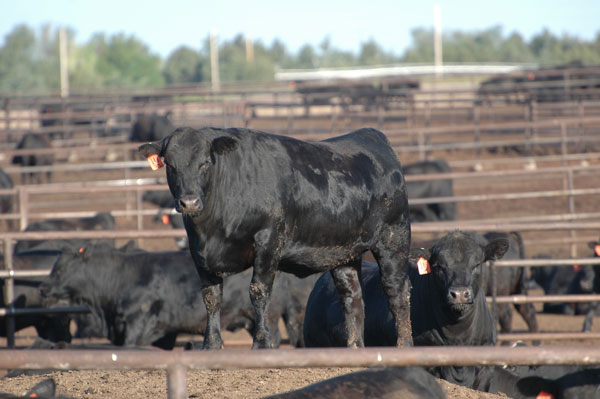Heat Stress In Livestock
With the right tools and management steps, ranchers can prepare for extreme heat conditions and hopefully triumph over them.
June 27, 2012

As the temperature increases, ranchers and feedlot operators start to worry about the well-being of their cattle. However, it is not just heat that plays a part in heat stress, says Heather Larson, SDSU Extension cow-calf field specialist.
"Producers need to monitor all weather conditions such as temperature, humidity and wind, closely and start interventions early in the day, well before noon," Larson says. "If an extended amount of time elapses before cattle are cooled down it may be too hot and late."
During times of hot days, followed by warm nights Larson says there is also a potential that cattle will not have enough time to cool down completely through the night before the sun starts to heat things up again.
Heat stress is one of those conditions that occur almost every summer. Larson says its impact on livestock varies based on genetic makeup, health status, stage of production and previous exposure to heat.
"Together, these factors can become deadly, when the combination of temperature, humidity, wind speed and cloud cover result in extreme environmental conditions," Larson says.
Being able to detect when cattle are becoming heat stressed is an important factor.
"Watch cattle early for signs such as panting or open-mouthed breathing. These are indications that heat stress is occurring and interventions should take place," Larson says.
She adds that cattle producers should avoid working, transporting or moving cattle during hot weather.
"If it's necessary to work or move cattle, do so in the early morning hours only. Cattle are still dissipating their body heat during the evening hours," Larson says.
Change feeding times
Producers can also change their feeding times from morning to late afternoon. Larson explains that this shifts the heat produced by fermentation to night time, when cattle are better able to dissipate the heat.
"If you are feeding twice a day then feed 60-70% of the total ration in the late afternoon and the rest in the morning," she says.
Water intake decreases when water in the tanks exceeds 80°F. As a result, Larson says producers need to ensure that water pipes are not exposed to sun. Pipes should be at least 2-feet underground. Adding a supplemental tank of water to pens of cattle is another step producers can take.
Larson reminds producers to check the refill rate of the stock tanks.
"Remember, in the summer when many animals are drinking many tanks will be trying to fill at one time in addition to other potential needs for water on the same water supply line," she says. "During the summer water intake may exceed 9 gal./head/day. It is recommended that cattle have a water space requirement of 1.5" per head. For example, 100 head of cattle would need 150 inches of water tank perimeter."
Control flys and insects
Under hot conditions fly control becomes even more important says Larson.
"Cattle will group together to get away from biting flies. Under hot conditions this will aid in increasing heat stress. Provide fly control through the use of fly tags, sprays, or other control methods," Larson said.
Providing shade will take a substantial amount of stress off cattle. However, Larson says this is typically not an option, but providing shade to vulnerable animals such as the sick pen may prevent deaths. If using sheds make sure there is adequate air flow.
The weight and color of animals are additional considerations.
"Dark-hided and heavier cattle should preferentially be given pens with more airflow. If pens near shelterbelts with poor airflow need to be used, stock them with lighter-weight, lighter-colored calves if possible," Larson says.
Sprinklers can help reduce heat stress, but if sprinklers are used, Larson says they should provide large water droplets instead of a mist.
"Water should run off the cattle saturating the hair. Running the sprinklers for 5 to 10 minutes at a time, twice an hour, will allow evaporative cooling to take place and is preferred over continuous sprinkling," she says.
Wetting down pen surfaces will provide a cooler surface for animals to stand and also will help alleviate heat stress. If you have no way to sprinkle cattle to cool them and the ground down, then another option that may help somewhat to cool the ground is applying a layer of ground straw. This will help by absorbing less solar radiation and providing a slightly cooler place to stand.
The USDA's Agricultural Research Service offers a cattle heat stress forecast page here. They forecast out a week at a time to help prepare for conditions that may be potentially harmful.
"With this tool and the management steps above, ranchers can prepare for extreme conditions and hopefully triumph over them," Larson says.
You May Also Like


.png?width=300&auto=webp&quality=80&disable=upscale)
